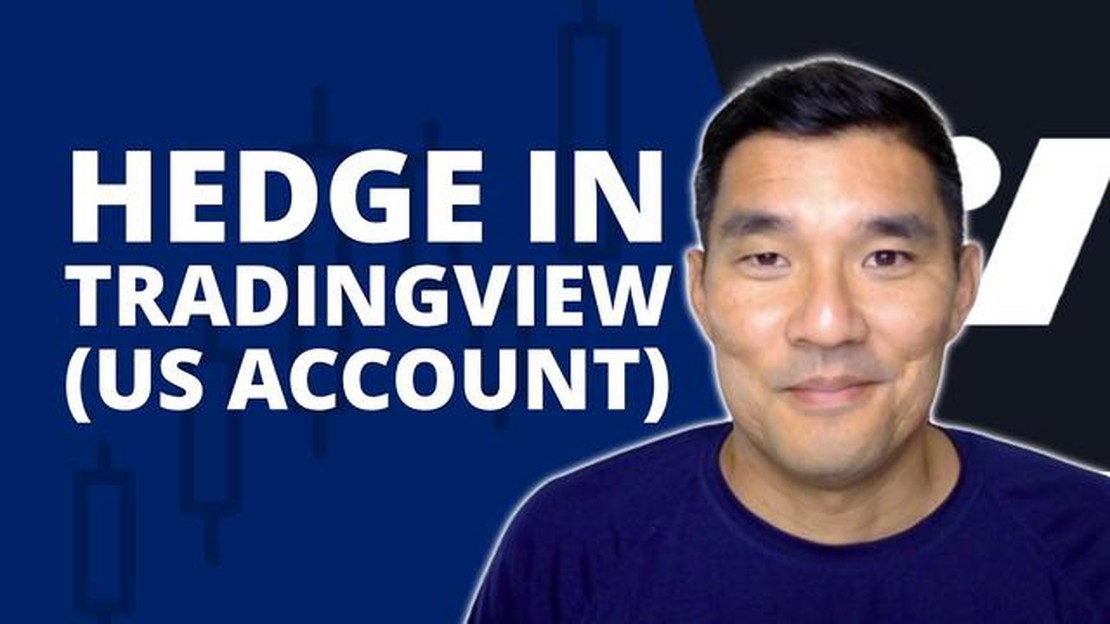Understanding RBA FX: Everything You Need to Know
Understanding RBA FX: All You Need to Know If you are interested in foreign exchange (FX) trading, then understanding the role of the Reserve Bank of …
Read Article
Forex hedging is a risk management strategy that is commonly used by traders to protect themselves against potential losses. While hedging is widely accepted and practiced in many countries around the world, the question of whether it is allowed in the United States is one that is frequently asked by Forex traders.
In the US, the legality and regulations surrounding Forex hedging depend on various factors, including the trader’s classification and the specific rules set forth by the governing bodies. Hedge accounting, which allows traders to offset their positions to minimize the impact of market fluctuations, is permitted for certain entities such as hedge funds and corporations. However, for individual retail traders, the regulations are stricter.
The Commodity Futures Trading Commission (CFTC) and the National Futures Association (NFA) are the regulatory bodies responsible for overseeing Forex trading in the US. According to their guidelines, retail traders have limited options for hedging their Forex trades. The NFA’s Rule 2-43(b) prohibits hedging by requiring traders to close their oldest positions first before opening new ones in the opposite direction. This means that simultaneous long and short positions on the same currency pair are not allowed.
While Forex hedging may be limited for individual traders in the US, there are still alternative strategies available to manage risk effectively. Traders can diversify their portfolios by investing in different asset classes and currency pairs, use stop-loss orders to limit potential losses, or employ options strategies to hedge against adverse market movements. It is important for traders to carefully consider the regulations and explore the various risk management techniques to make informed decisions and protect their investments in the highly volatile Forex market.
Forex hedging is a risk management strategy that involves taking two counteracting positions in the foreign exchange market to minimize potential losses. While hedging is widely used by forex traders around the world, the regulations regarding hedging vary from country to country. In the United States, the rules on forex hedging are quite strict and can have significant implications for traders.
The Commodity Futures Trading Commission (CFTC), which is the regulatory body overseeing the forex market in the US, has imposed several restrictions on hedging. These restrictions are primarily aimed at protecting retail traders from excessive risk and promoting fair and transparent markets.
One of the key regulations enforced by the CFTC is the “First In, First Out” (FIFO) rule, which requires forex brokers to close positions in the order they were opened. This means that if a trader has multiple positions in the same currency pair, the oldest position must be closed first. This rule effectively limits the ability to hedge because it prevents traders from simultaneously holding long and short positions in the same currency pair.
In addition to the FIFO rule, the CFTC also requires forex brokers to maintain a minimum net capital requirement of $20 million. This requirement ensures that brokers have sufficient financial resources to cover potential losses and protect the interests of traders.
Despite these restrictions, there are still some options available for hedging in the US forex market. Traders can make use of correlated currency pairs, which are currency pairs that tend to move in the same direction. By taking opposite positions in two correlated currency pairs, traders can achieve a form of hedging while complying with the regulations.
It’s important for forex traders in the US to fully understand the regulations surrounding hedging and to work with brokers that are compliant with the CFTC rules. By staying informed and using appropriate strategies, traders can navigate the restrictions and effectively manage their risk in the forex market.
| Pros of Forex Hedging in the US: | Cons of Forex Hedging in the US: |
|---|---|
| - Minimizes potential losses | - FIFO rule limits hedging possibilities |
| - Promotes risk management | - High net capital requirement for brokers |
| - Can use correlated currency pairs for hedging |
Forex hedging refers to the practice of strategically offsetting potential losses by opening additional positions. It is a risk management technique that allows traders to protect their investments in volatile markets.
The main purpose of forex hedging is to reduce or eliminate the risk of adverse price movements in currency pairs. By opening opposite positions, traders can mitigate potential losses when the market moves against their initial trades.
There are different types of forex hedging strategies, including:
1. Simple Forex Hedging: This strategy involves opening opposite positions on the same currency pair to offset potential losses.
2. Multiple Currency Hedging: This strategy involves opening positions on multiple currency pairs to balance potential risks across different markets.
Read Also: How to Install Currency Strength Indicator in MT4: Step-by-Step Guide
3. Options Hedging: This strategy involves using options contracts to protect forex trades from adverse price movements. Options give traders the right, but not the obligation, to buy or sell a currency pair at a predetermined price at a future date.
4. Forward Contracts: This strategy involves entering into a forward contract, which is a customized agreement to buy or sell a currency pair at a specific price at a future point in time.
Forex hedging can be a complex technique that requires a deep understanding of the market and risk management principles. Traders must carefully assess their risk tolerance and develop a hedging strategy that suits their trading style and objectives.
While forex hedging can help mitigate risks, it is important to note that it does not guarantee profits. Hedging involves additional costs, such as spreads, commissions, and potential margin requirements.
Read Also: What Does the 'N' Stand for in Moving Average?
In conclusion, forex hedging allows traders to protect their investments and reduce potential losses in volatile markets. It is a valuable risk management tool that can be employed by experienced traders to navigate fluctuations in currency prices.
Forex hedging, the practice of offsetting the risk of price fluctuations in the foreign exchange market, is allowed in the United States. However, there are certain guidelines and restrictions that traders must follow to engage in hedging forex trades.
 3. Reporting Requirements: Traders engaging in forex hedging are required to report their positions and transactions to the CFTC. They must maintain accurate records of their hedging activities and submit regular reports to demonstrate compliance with the regulations.
4. Use of Registered Entities: To hedge forex trades in the US, it is advisable to work with registered entities such as regulated brokers or banks. These entities have the necessary expertise and infrastructure to facilitate hedging transactions while ensuring compliance with regulatory requirements.
5. Consult with Professionals: It is recommended to seek advice from legal and financial professionals who specialize in forex trading and hedging in the US. They can provide valuable insights and guidance on the specific regulations and best practices to follow.
3. Reporting Requirements: Traders engaging in forex hedging are required to report their positions and transactions to the CFTC. They must maintain accurate records of their hedging activities and submit regular reports to demonstrate compliance with the regulations.
4. Use of Registered Entities: To hedge forex trades in the US, it is advisable to work with registered entities such as regulated brokers or banks. These entities have the necessary expertise and infrastructure to facilitate hedging transactions while ensuring compliance with regulatory requirements.
5. Consult with Professionals: It is recommended to seek advice from legal and financial professionals who specialize in forex trading and hedging in the US. They can provide valuable insights and guidance on the specific regulations and best practices to follow.
| Key Points |
|---|
| - Forex hedging is allowed in the US, but with certain restrictions and guidelines. |
| - Direct hedging is prohibited, and traders must use indirect hedging strategies. |
| - Position limits set by the CFTC must be adhered to. |
| - Traders must report their hedging activities to the regulatory authorities. |
| - Working with registered entities is recommended for compliance and expertise. |
| - Professional advice is crucial to understand and navigate the regulations. |
By following these guidelines and staying abreast of any regulatory changes, traders can engage in forex hedging in the US while maintaining compliance and mitigating the risks associated with currency fluctuations.
Hedging in the forex market is allowed in the US, but it is subject to certain regulations and restrictions set by the Commodity Futures Trading Commission (CFTC). Traders are required to follow certain guidelines when engaging in hedging strategies.
Forex hedging is a strategy used by traders to protect against potential losses in the forex market. It involves opening two opposing positions, one to protect against a potential loss in another position. This strategy helps to limit the impact of market volatility and mitigate risks.
The regulations for forex hedging in the US are set by the CFTC. Traders are required to follow the “No Hedging Rule” which prohibits them from opening two opposing positions on the same currency pair. However, traders can still use other hedging strategies, such as using different currency pairs or offsetting positions with correlated assets.
Yes, using different currency pairs is a common way to hedge forex trades in the US. Traders can open positions in correlated currency pairs to mitigate risks. For example, if a trader has a long position on EUR/USD, they can open a short position on USD/CHF as a hedge.
Yes, there are alternatives to hedging in the forex market. Traders can use other risk management tools like stop-loss orders and take-profit orders to protect their trades. These tools automatically close a position at a predetermined price level to limit potential losses or secure profits.
Forex hedging is a strategy used by traders to protect themselves against potential losses in the forex market. It involves opening two or more positions in opposite directions to offset the risk. In the US, forex hedging is allowed, but there are certain regulations that traders need to comply with.
Understanding RBA FX: All You Need to Know If you are interested in foreign exchange (FX) trading, then understanding the role of the Reserve Bank of …
Read ArticleHow Much Do Forex Traders Make a Day in South Africa? Forex trading has become increasingly popular in South Africa, with many individuals seeking to …
Read ArticleGuide: How to Use Forex Screener on TradingView With the vast amount of information available in the forex market, it can be overwhelming to identify …
Read ArticleIs Quotex Legal in Bangladesh? Quotex is an online trading platform that allows individuals to engage in various financial activities, such as trading …
Read ArticleIs it cheaper to buy forex at airport? When planning a trip abroad, one of the important considerations is how to get foreign currency. Many people …
Read ArticleDiscovering the Heiken Ashi Ma T3 new Indicator Forex trading can be a complex and challenging endeavor. Traders are constantly seeking new tools and …
Read Article